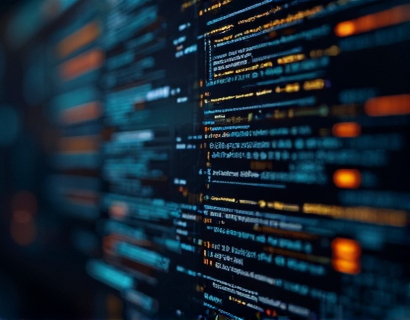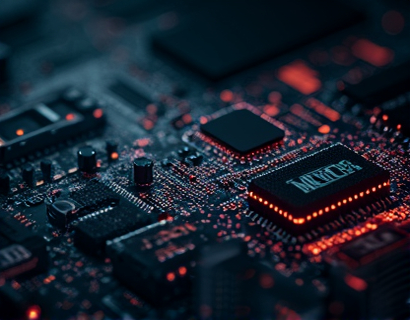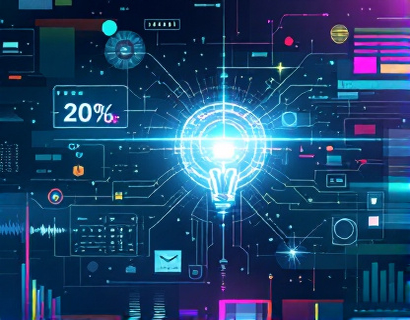Revolutionizing Blockchain Scalability: Advanced Layer 2 Solutions for EVM-Enabled Development
The blockchain landscape is rapidly evolving, with Ethereum at the forefront of decentralized applications (dApps). However, as the adoption of blockchain technology grows, one of the most significant challenges remains scalability. The Ethereum Virtual Machine (EVM) based architecture, while robust and secure, faces limitations in transaction throughput and processing speed, which can hinder the widespread adoption of decentralized applications. This article delves into the transformative impact of advanced Layer 2 (L2) solutions, designed to enhance the speed, security, and cost-effectiveness of EVM-enabled development, thereby propelling the future of blockchain innovation.
Understanding the Scalability Challenge
Ethereum's EVM processes transactions through smart contracts, executing them in a trustless and decentralized manner. However, this process is inherently slow and expensive. Each transaction requires gas, a unit of measurement for computational effort, which can lead to high fees during peak times. The current block time of approximately 13 seconds and a limited block size of 2MB per block further exacerbate the issue, resulting in congestion and delays. These limitations pose significant challenges for developers aiming to build scalable and user-friendly dApps.
Layer 2 Solutions: An Overview
Layer 2 solutions are designed to address these scalability issues by moving certain operations off the main blockchain (Layer 1) and onto secondary layers. These solutions do not compromise the security of the underlying blockchain but rather enhance performance by reducing the load on the primary chain. L2 solutions can be categorized into several types, each with unique mechanisms and benefits.
State Channels
State channels allow multiple parties to conduct a series of transactions off-chain, with the final state being submitted to the blockchain once the channel is closed. This method significantly reduces the number of on-chain transactions, lowering fees and increasing speed. For instance, two parties can exchange multiple transactions without each transaction being recorded on the blockchain, only submitting the initial and final states. State channels are particularly useful for applications requiring frequent, low-value transactions, such as gaming or micropayments.
Plasma
Plasma is a scalability framework that involves creating a network of child blocks (plasma chains) attached to the main blockchain. Each plasma chain can process multiple transactions independently, with only the root transaction being submitted to the main chain. This approach drastically reduces the load on the primary blockchain, enabling higher transaction throughput. Plasma chains can be further optimized with techniques like batch processing and sharding, enhancing efficiency and scalability.
Optimistic Rollups
Optimistic rollups bundle multiple transactions into a single transaction on the main chain, with the assumption that all transactions within the rollup are valid. If any transaction is found to be invalid, the rollup can be challenged and resolved. This method significantly reduces gas costs and increases transaction speed, as only the final state needs to be verified on the main chain. Optimistic rollups are particularly effective for dApps with high transaction volumes, such as decentralized finance (DeFi) platforms.
ZK Rollups
Zero-Knowledge Rollups (ZK Rollups) take the concept of rollups a step further by using zero-knowledge proofs to validate the entire batch of transactions off-chain. These proofs ensure that all transactions are valid without revealing the transaction details, providing a higher level of security and privacy. ZK Rollups offer the best of both worlds: high throughput and strong security guarantees, making them ideal for complex dApps and large-scale transactions.
Benefits of Layer 2 Solutions for EVM-Enabled Development
The integration of Layer 2 solutions into EVM-based development brings numerous advantages, transforming the landscape of blockchain applications.
Enhanced Speed
By offloading transactions to Layer 2, the main blockchain can focus on critical operations, resulting in faster transaction confirmation times. State channels and rollups, in particular, enable near-instant transactions, which is crucial for user experience in real-time applications like gaming and social media.
Reduced Costs
One of the most significant benefits of L2 solutions is the reduction in gas fees. With fewer transactions processed on the main chain, the overall cost per transaction decreases, making blockchain applications more accessible and cost-effective. This is particularly beneficial for microtransactions and high-frequency trading, where even small fee reductions can lead to substantial cost savings.
Increased Scalability
Layer 2 solutions dramatically increase the transaction capacity of the blockchain network. By handling a larger volume of transactions off-chain, the main chain can maintain performance and security without sacrificing scalability. This is essential for the mass adoption of blockchain technology, as it allows for the seamless integration of dApps into everyday life.
Improved Security
Despite the off-chain nature of L2 solutions, security remains a top priority. State channels and rollups employ robust cryptographic techniques to ensure that transactions are valid and tamper-proof. Optimistic rollups use challenge periods to detect and prevent fraudulent activities, while ZK Rollups leverage zero-knowledge proofs to provide strong security guarantees without compromising privacy. These mechanisms ensure that the integrity of the blockchain is maintained, even as transaction volumes increase.
Challenges and Considerations
While Layer 2 solutions offer significant advantages, there are challenges and considerations that developers must address to fully leverage their potential.
Complexity and Integration
Implementing L2 solutions can introduce additional complexity into the development process. Developers need to understand the intricacies of each solution and ensure seamless integration with the EVM. This may require specialized knowledge and tools, potentially increasing the initial development overhead. However, as the ecosystem matures, more user-friendly frameworks and libraries will emerge, simplifying the integration process.
User Experience
Ensuring a smooth user experience is crucial for the adoption of dApps built on L2 solutions. Users should not notice the underlying complexity; transactions should be fast, cheap, and reliable. Developers must focus on creating intuitive interfaces and efficient workflows that hide the technical details from end-users.
Interoperability
Interoperability between different Layer 2 solutions and the main blockchain is essential for a cohesive ecosystem. Developers should consider how their dApps will interact with other protocols and platforms, ensuring compatibility and seamless user experiences. Standardization efforts and collaborative initiatives can help address these interoperability challenges.
Future Prospects and Innovations
The future of blockchain scalability is bright, with ongoing research and development pushing the boundaries of what is possible. Several emerging trends and innovations are set to further enhance the capabilities of Layer 2 solutions.
Cross-Layer Optimizations
Cross-layer optimizations involve coordinating improvements across multiple layers of the blockchain stack, from the consensus mechanism to the application layer. By optimizing the entire ecosystem, developers can achieve more significant gains in scalability, security, and efficiency. For example, combining sharding on the main chain with advanced rollup techniques can create a highly scalable and performant network.
Automated Market Protocols (AMPs)
Automated Market Protocols are decentralized exchanges built on Layer 2 that leverage smart contracts to facilitate trading without the need for centralized order books. AMPs can offer lower fees, higher liquidity, and faster execution times, making them an attractive option for traders and developers alike. The integration of AMPs with EVM-based dApps can further enhance the trading experience.
Layer 1 Enhancements
While Layer 2 solutions address immediate scalability needs, ongoing enhancements to Layer 1 are crucial for long-term growth. Projects like Ethereum 2.0 aim to introduce proof-of-stake consensus, sharding, and other improvements that will inherently increase the network's capacity and efficiency. These enhancements will complement Layer 2 solutions, creating a more robust and scalable blockchain ecosystem.
Conclusion
The advent of advanced Layer 2 solutions marks a pivotal moment in the evolution of blockchain technology. By addressing the scalability challenges of EVM-based development, these solutions enhance the speed, security, and cost-effectiveness of decentralized applications, paving the way for widespread adoption and innovation. As the ecosystem continues to mature, developers have the opportunity to build more sophisticated and user-friendly dApps, driving the future of blockchain forward.










































